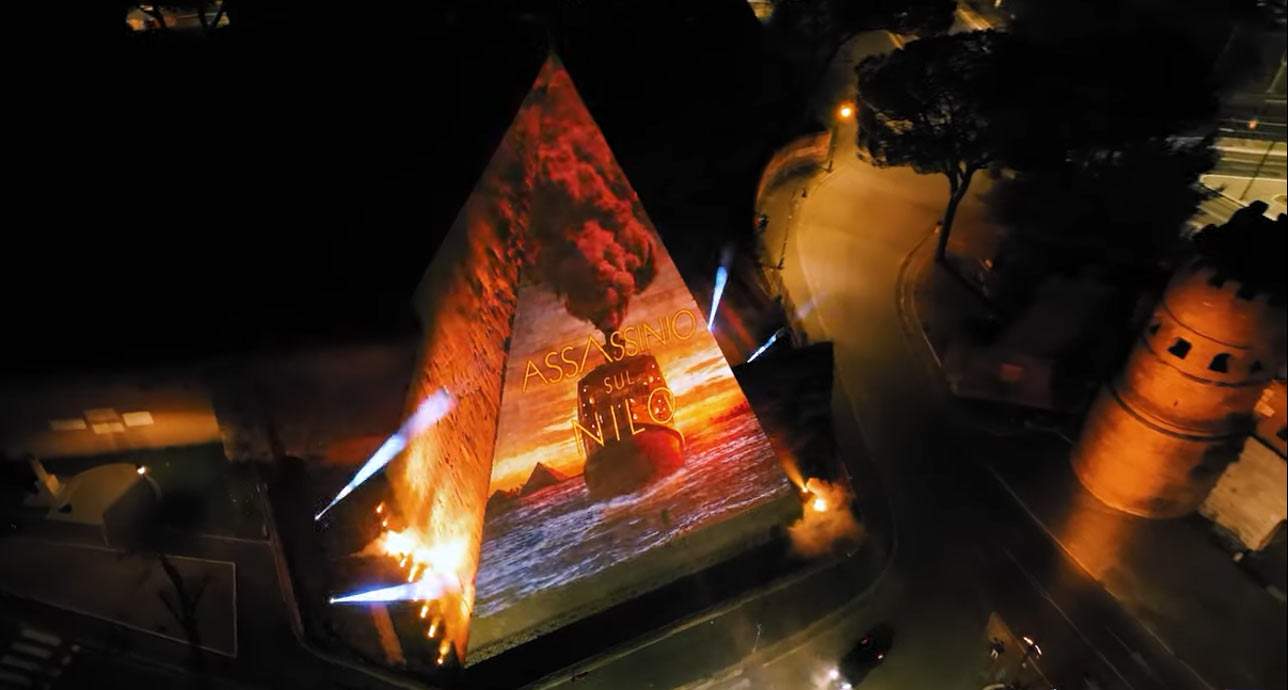A monument turned into a huge tarpaulin to promote the release of a film at the cinema: it is happening in Rome, where the Pyramid Cestia last night was illuminated with projections that broadcast advertising for the film Murder on the Nile, released Feb. 10 in theaters. All this with the endorsement of the Special Superintendence of Rome, which, 20th Century Studios Italia, the film’s producer, has guaranteed its “support” for the operation, 20th Century Studios Italia reports. The show will also not be held in the coming days: in fact, it was launched only for the release of the film.
“The eternal city celebrates Murder on the Nile,” 20th Century Studios Italia’s socials read, “with an evocative light show on the Cestia Pyramid, thanks to the support of the Special Superintendence of Rome. Don’t miss Kenneth Branagh’s film, now in theaters.” From the superintendence they let us know that “this was an initiative to launch the film released yesterday in theaters (a cultural product of a sector, cinema, that is facing a heavy crisis), and that it took place from 7 to 11 pm. No repeat performances are planned. The role of the Superintendence in this operation is to have made the monument available for a fee that will be used for the enhancement of the Pyramid.”
Certainly it is that since the images began to spread on social network message boards many have raised perplexities, recalling also the controversy over the F-Light Festival in Florence, which arose for much less: in Tuscany, in fact, the fuss had been raised over the projection (for a few seconds) of the sponsor’s logo, on the facades of some monuments, which had supported a festival that has always intended video projections as an art form. But in Rome the case was quite different: “The issue of ’videomapped’ monuments is topical,” pointed out art historian Fabrizio Federici on his Mo(n)stre page: “recently there was controversy in Florence because on some iconic buildings (the Ponte Vecchio, the Ospedale degli Innocenti) the name of the sponsor appeared for a few moments at the end of the projections. Those controversies seemed specious to me.... But in this case? This is pure and simple publicity. I am puzzled.”
However, this would not be unprecedented: also in Rome, in 2013, Castel Sant’Angelo had been used in the same way for the launch of Sony’s new Play Station 4 console. And here perhaps the film’s producers found an interesting visual connection between the monument, reminiscent of the Egyptian pyramids, and the film’s settings.
Some on social media, however, are greeting the operation positively: the argument is that it could be a way to draw attention to a monument of ancient Rome (the Pyramid Cestia was built between 18 and 12 B.C. as the sepulchre of the Septuagint Caius Cestius Epulon) that perhaps not everyone knows about. In short, the question that resonates at the end is always the same: to what extent can monuments be used for such operations?
 |
| Rome, the Cestia Pyramid for an evening becomes a tarpaulin advertising a film |
Warning: the translation into English of the original Italian article was created using automatic tools. We undertake to review all articles, but we do not guarantee the total absence of inaccuracies in the translation due to the program. You can find the original by clicking on the ITA button. If you find any mistake,please contact us.